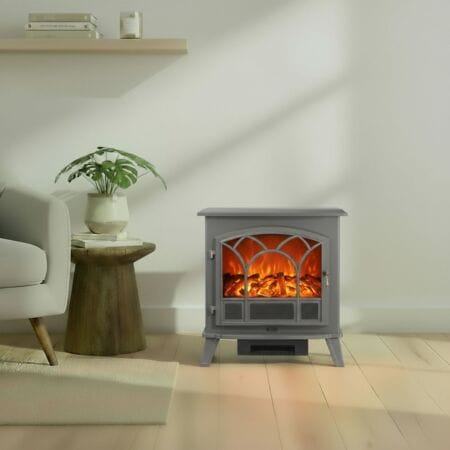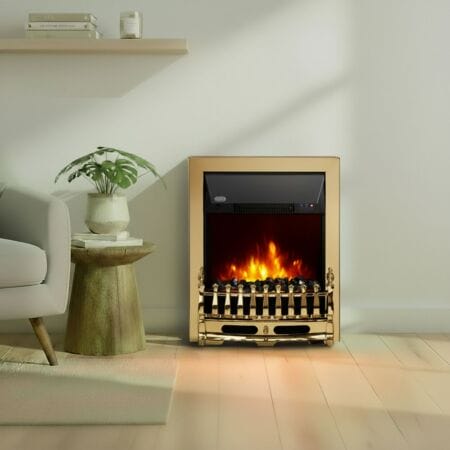Contents
ToggleWhat we'll cover...
An exploration of zoned heating setups and the way they operate with various smart heating applications and devices.
The role of zonal heating in modern heating systems
Imagine being able to heat your home like you light your rooms: only where and when the energy is required. Zero waste, no overheating, and no unnecessary energy use. That’s zoned heating in a nutshell.
It’s a smarter, more efficient way to warm your home – one that puts you in control of which spaces get heated, when, and by how much. And in a world where rising energy costs and environmental impact matter more than ever, zoned heating isn’t just a nice-to-have – it’s a no-brainer.
This guide will break down exactly what zoned heating is, how it works, where it shines, or sizzles from a heating perspective, and how to get started whether you’re smartening up a single room or planning a whole-home revamp.
What is zoned heating?
Zoned heating (also known as zonal or multi-zone heating) is a system that works in alignment with smart automated heating setups, and splits your home into independent temperature zones, so each area can be heated separately based on how and when you use it.
Rather than treating your entire home as one single heating zone controlled by a sole thermostat, zoned heating allows you to tailor your comfort on a room-by-room basis.
Real-world examples:
- Warm up the bedrooms in the morning, but not the radiators in the lounge until the evening.
- Keep your home office toasty during work hours, while the rest of the house sits in an economical energy-saving mode.
- Turn off the guest bedroom heating entirely when it’s not in use.
Each zone works independently, meaning you only heat what’s necessary, which stops you from paying to warm up empty spaces.
How zoned heating systems work
The basic zonal heating systems are simple: each zone is controlled by its own temperature sensor and valve, whether that be a smart TRV or manual valve. When the room temperature drops below the desired setting, the valve will open, allowing hot water into the radiator (or electric current into the heater).
But the setup can vary depending on your system.
Zoning with smart TRVs
Smart TRVs (thermostatic radiator valves) are fitted to your radiators and control heat on a room-by-room basis. They will:
- Measure room temperature
- Automatically adjust radiator output
- Connect to an app for remote control
- Allow detailed scheduling for every room
Best for: Existing systems, retrofits, and users who want the benefits of maximum control without rewiring the house from top to bottom.
Zoning with a zoned manifold or boiler split
This is the most advanced type of zone heating setup and typically involves:
- A dedicated heating circuit for each zone
- Individual actuators or pumps
- A central control system (usually part of a smart heating hub)
Best for: New-build properties or full heating system installations where the infrastructure is built from scratch with zoning in mind.
Managing zoned heating
The real magic of zonal heating is associated with how it is controlled. Most zoned systems are managed via a smart app, giving you the power to adjust temperatures and timings with a few taps.
App features:
- Create room-by-room schedules
- Alter heating settings remotely
- Monitor usage and optimise settings
- Create custom routines (e.g., “Morning warm-up” or “Evening wind-down”)
- Integrate voice control via Alexa, Google, or Siri
Want to warm your home office at 8am and have it cool down after 5pm? Easy. Fancy a cosy bathroom before your 6:30am shower? Done. Need the spare room ready for the in-laws? Schedule it for Saturday – then switch it straight off when they leave.
BestHeating tip: Look for smart heating controls that support geofencing. These will enable you to automatically adjust zones when you leave or return home for an even greater level of enhanced efficiency. You can find further detail in our article on how smart heating can reduce your energy bills.
What counts as a heating zone?
You can define your zones however you like, but the most common setups include:
- By floor: Upstairs vs downstairs
- By use: Living zones, sleeping zones, occasional-use spaces
- By room: Bedroom, lounge, kitchen, etc.
- By person: Ideal for shared homes or large families with different routines
A zonal heating setup can be as simple as a single smart TRV in a bedroom, or as sophisticated as a fully integrated system across multiple smart devices.
Does zoned heating really save money?
Yes – and in the right home, it can make a big difference to your energy bills.
The main ways zoning saves money:
- You won’t heat up unused rooms
- You can lower temperatures in lesser-used zones
- You avoid overheating rooms that are already warm
- Your boiler doesn’t need to run as long or as hard
According to the Energy Saving Trust, smart zoning and controls can cut heating bills by up to 30% in certain homes – particularly those with multiple floors or irregular room usage.
Even better: zoning makes your heating feel smarter, more personalised and less wasteful.
Can you retrofit zoned heating?
Absolutely. One of the biggest perks of zoned heating systems is that they’re flexible, scalable, and easy to fit without completely gutting your home.
Retrofit options:
- Smart TRVs: The simplest way to zone without making alterations to pipework
- Smart thermostats: Add room-by-room scheduling to existing heating circuits
- Electric radiators: Electric radiators already function independently – just add smart plugs or integrated controls
BestHeating insight: You don’t have to zone your entire home from day one. Start with high-traffic or high-demand areas and expand as and when needed.
Common myths about zoned heating
“It’s too expensive to set up.”
Truth: You can start small. A couple of new smart radiator valves can cost less than a night out – and start saving you money almost immediately.
“It’s only for big houses.”
Truth: Zoning is just as useful in flats or small homes – especially if your heating is constantly on but only a few rooms of the house are often occupied.
“It’s complicated.”
Truth: Most smart systems are user-friendly and are supplied complete with guided setup. If you can use a smartphone, you can manage zoned heating.
Sustainability bonus: Zoned heating = greener heating
Zoned heating doesn’t just cut costs – it also reduces carbon emissions. Lower fuel consumption means fewer emissions and a lessened environmental footprint, especially when teamed with:
- Smart controls
- Low-flow heating systems
- Renewable energy (solar panels or green tariffs)
In short: zoned heating is a key step towards achieving a low-carbon, future-ready home.
Still wondering how it plays out in everyday life? Here are a few examples:
Scenario 1: The hybrid worker
You work from home three days a week and commute the other two. Your smart system keeps the home office warm during midweek working days, but drops it to a lower background temperature when you venture into the office. The rest of the house? Heats up on demand.
Scenario 2: The family home
Parents want the lounge warm in the evenings. Teens want the loft conversion snug for gaming. The downstairs guest room? Unused until the in-laws stay over against your greatest will. Zoned heating keeps everyone happy (and the arguments down to a minimum).
Scenario 3: The weekend-only radiator
Got a reading nook or hobby room that is only used on a Sunday? Schedule its radiator to switch on once a week. It provides comfort when you need it – and savings when you don’t.
Zoned heating is heating that works around you
We’re not heating castles in 2025. We’re heating homes – real homes, with busy schedules, part-time rooms, and rising energy bills. Zoned heating isn’t just about saving money (although it does do that brilliantly). It’s also about reclaiming control of your comfort.
By setting up smart heating systems with smart thermostats, programmable TRVs, and easy-to-use apps, zoned heating puts you in charge. It’s flexible, efficient, and built for modern living.
Find out all about the future of smart heating in our Advice Centre, and be sure to let us know what your zonal heating system entails in the comments below, or by reaching out to us through Instagram, Facebook or X.
John is a Research Specialist for the Best Heating Advice Centre, where for over nine years he has dedicated himself to demystifying home heating for our customers. He specialises in creating clear, data-driven guides and how-to articles by collaborating directly with our team of certified heating experts and product engineers.
His work, built on a foundation of journalistic research, has helped millions of readers make confident and informed decisions about their home heating. When he’s not breaking down the heat output differentials from radiators to heated towel rails, John fancies himself as a fine football and music connoisseur.









